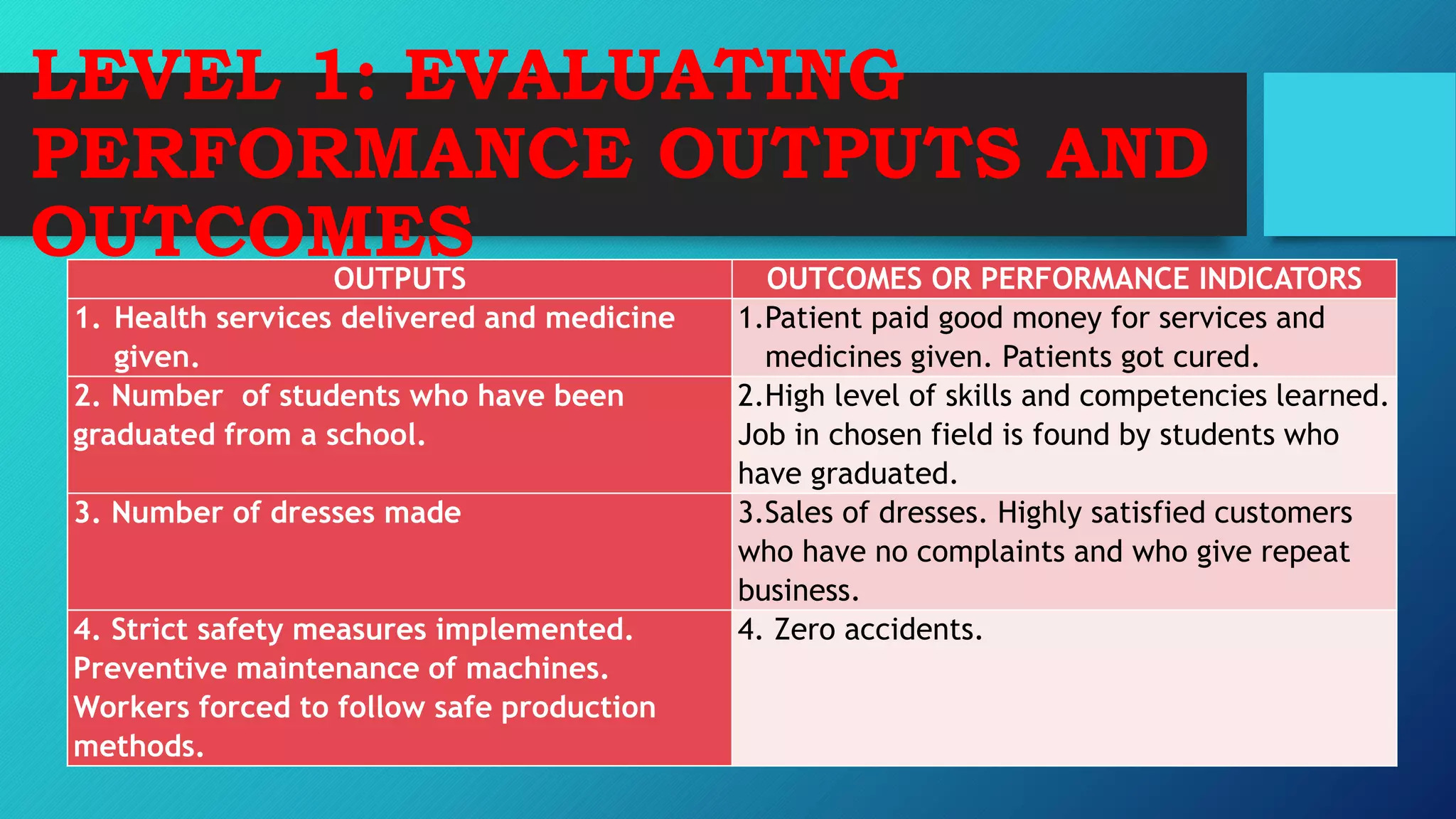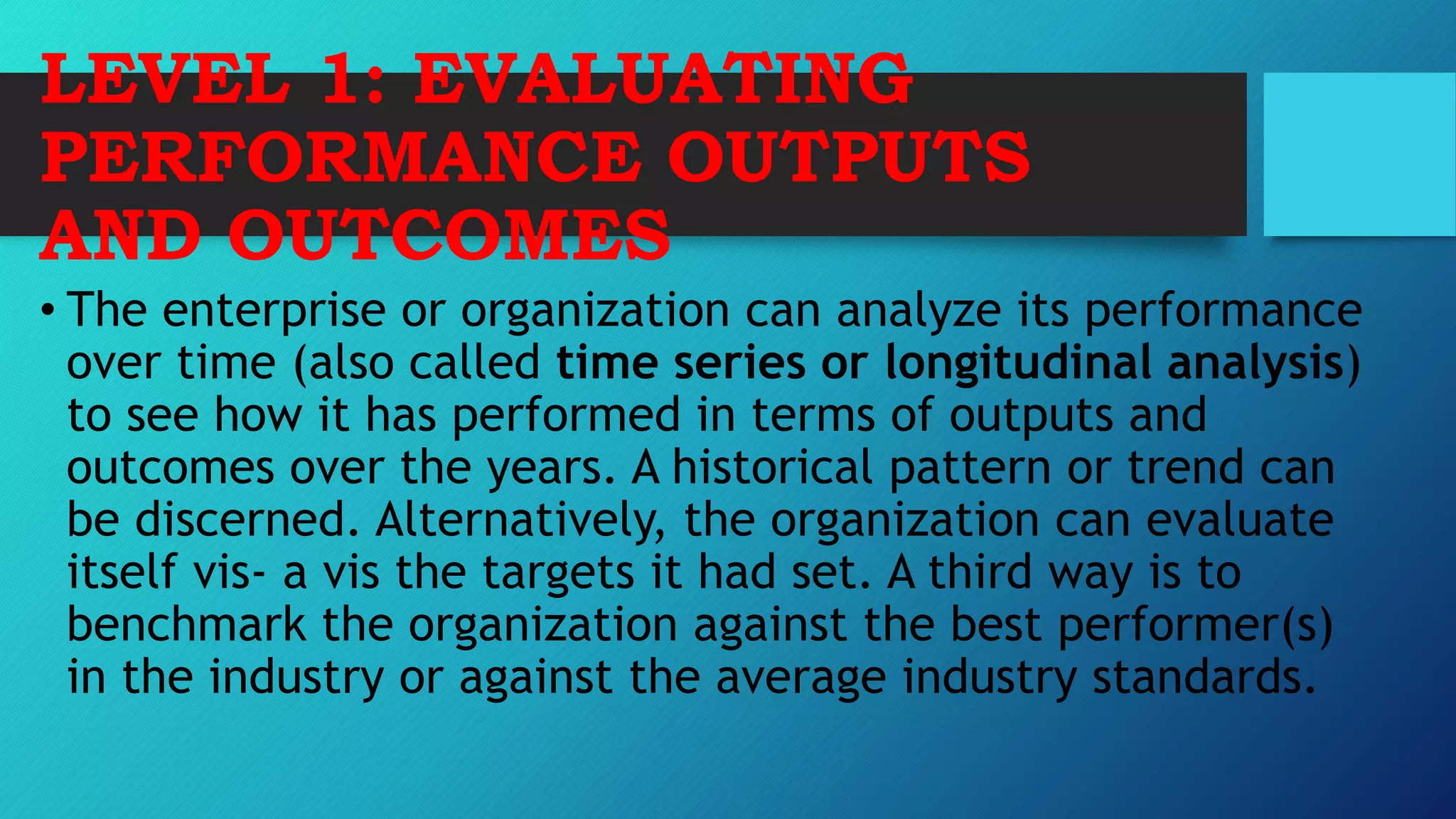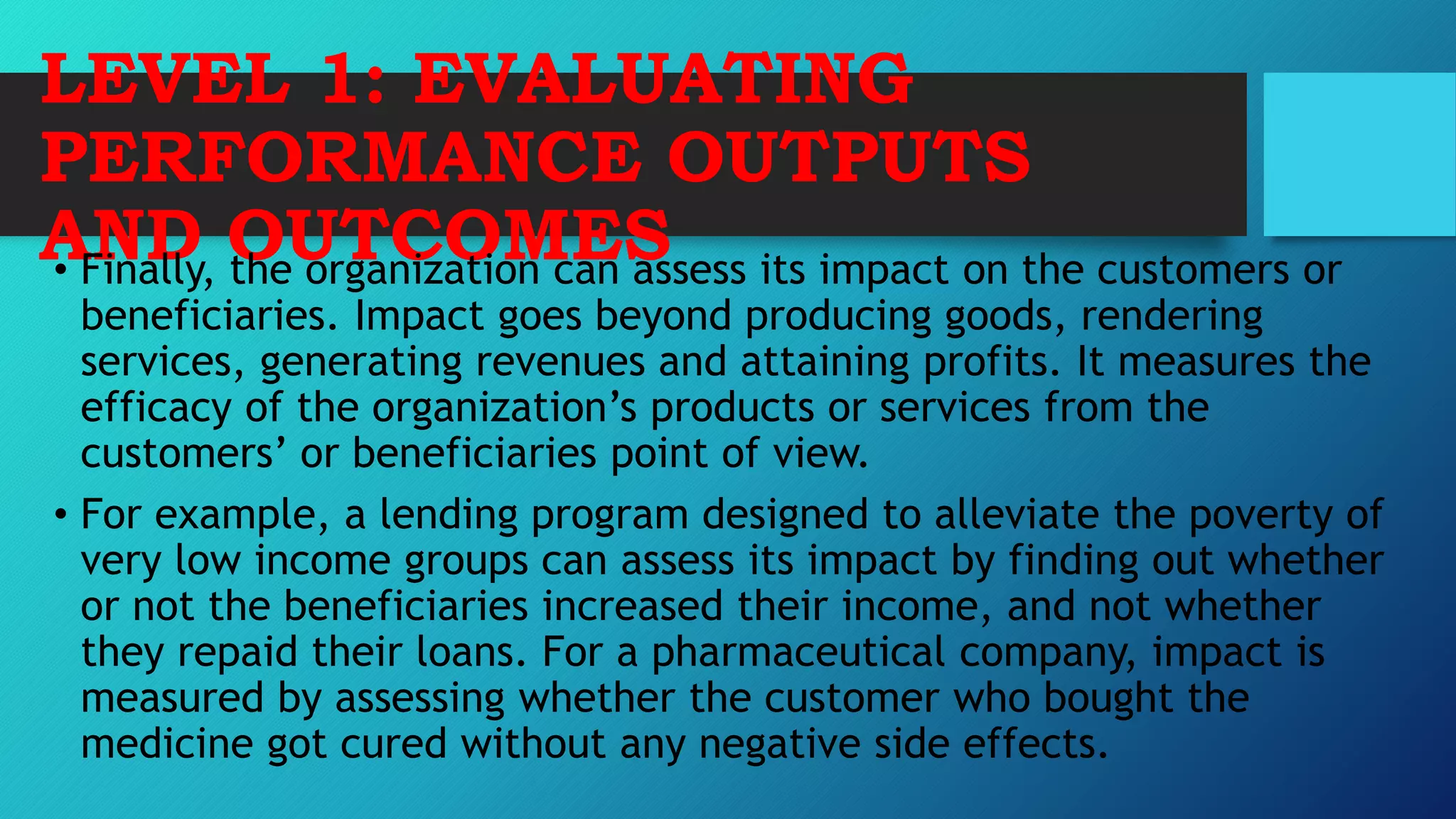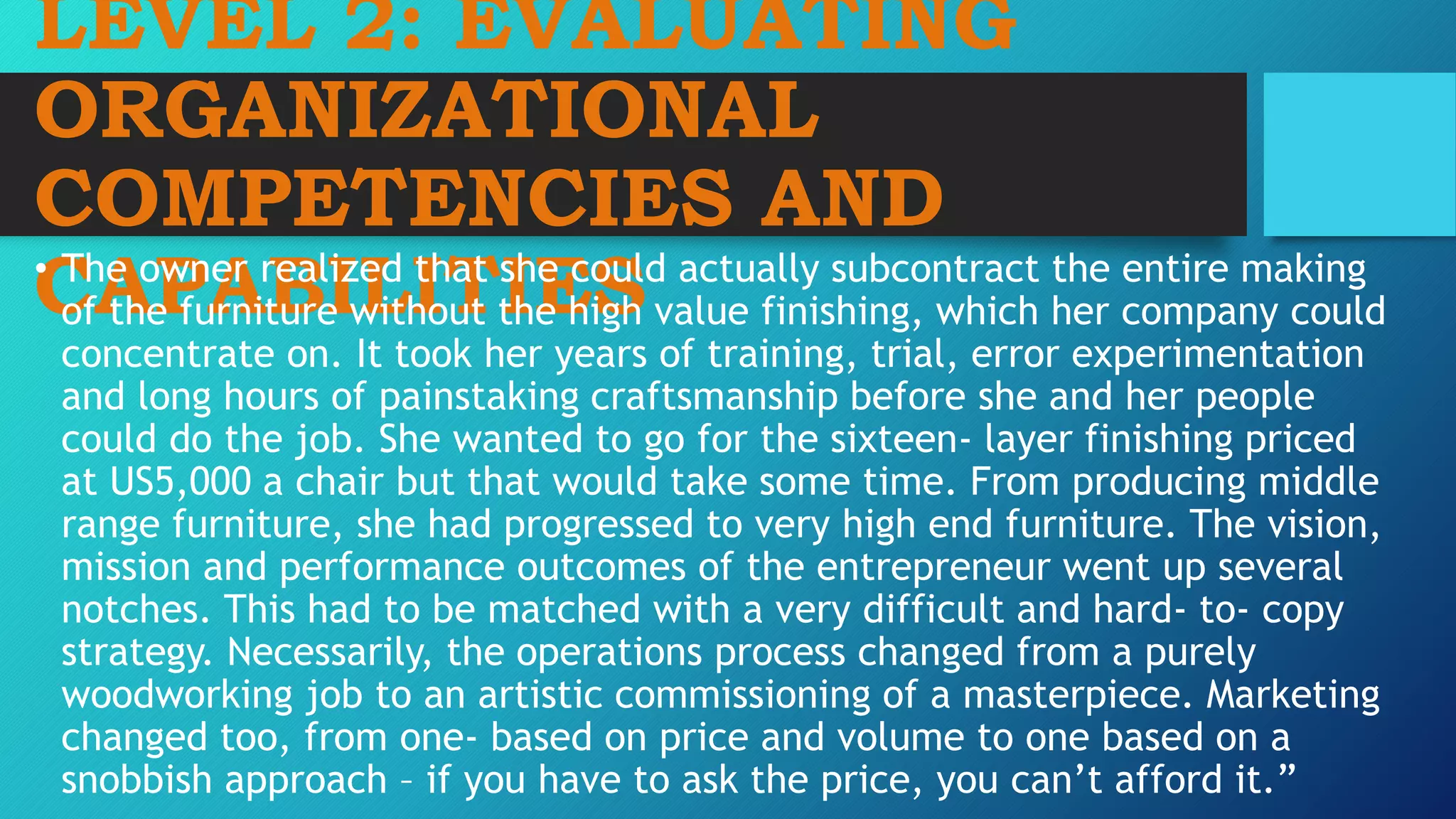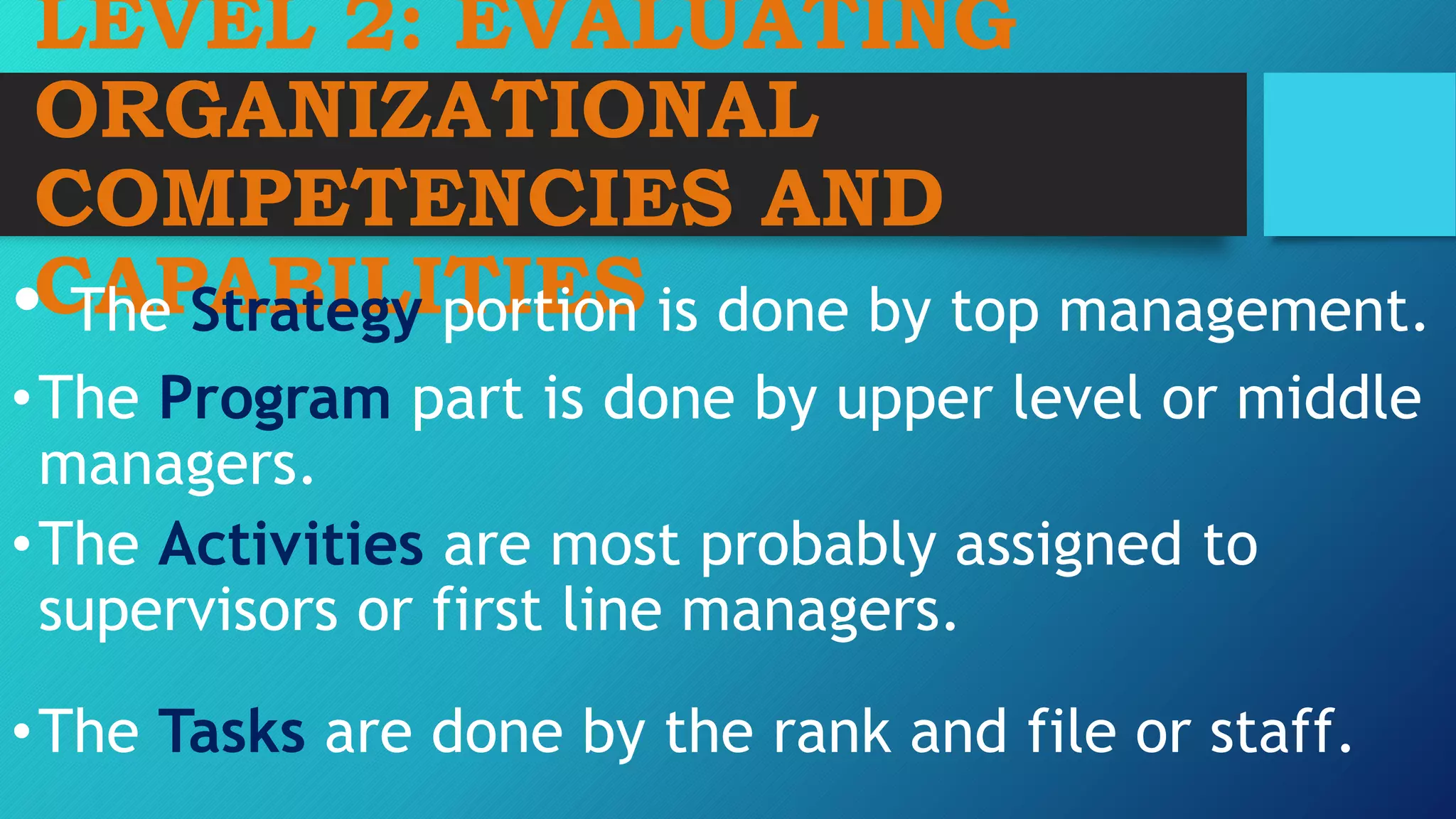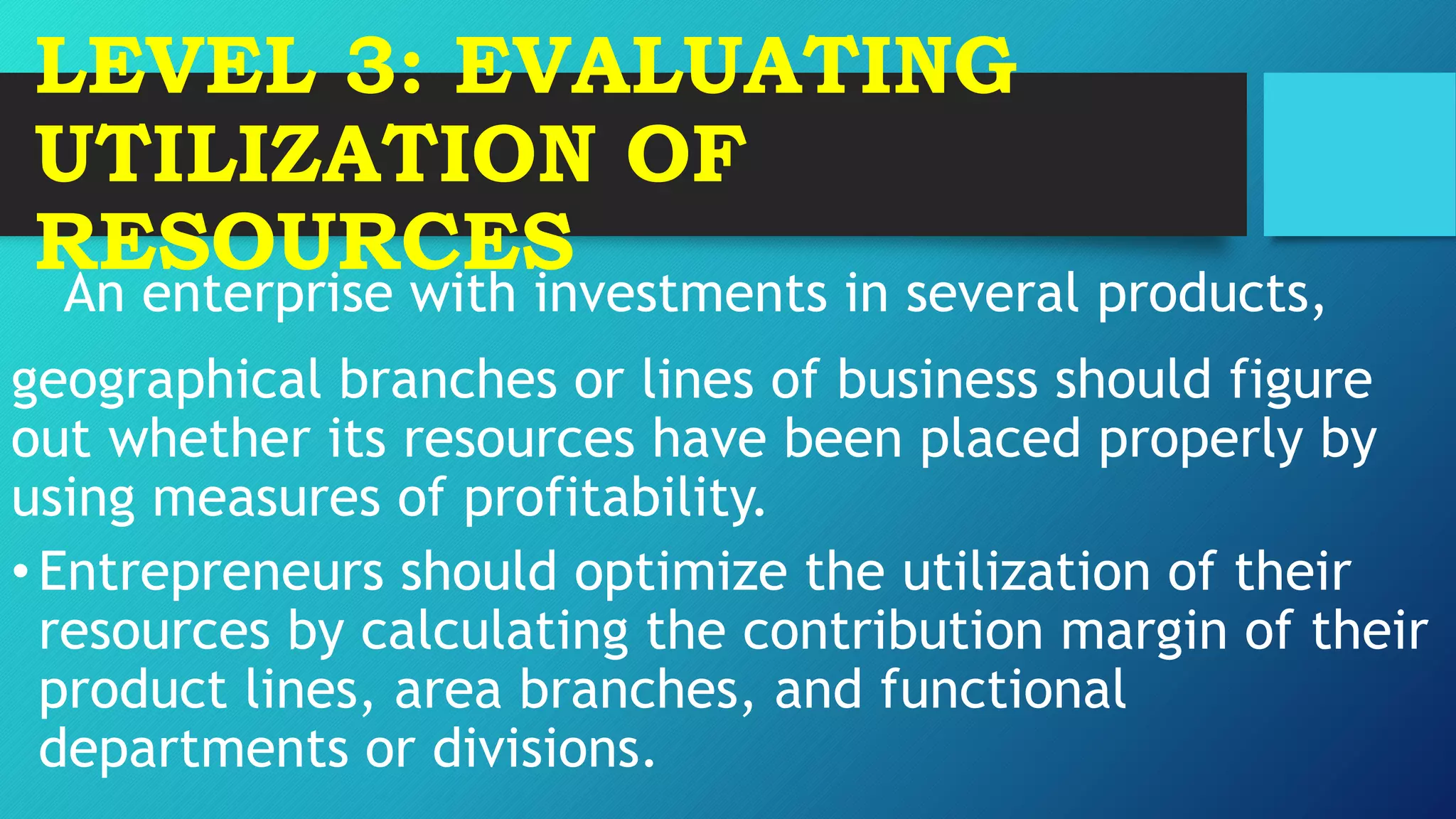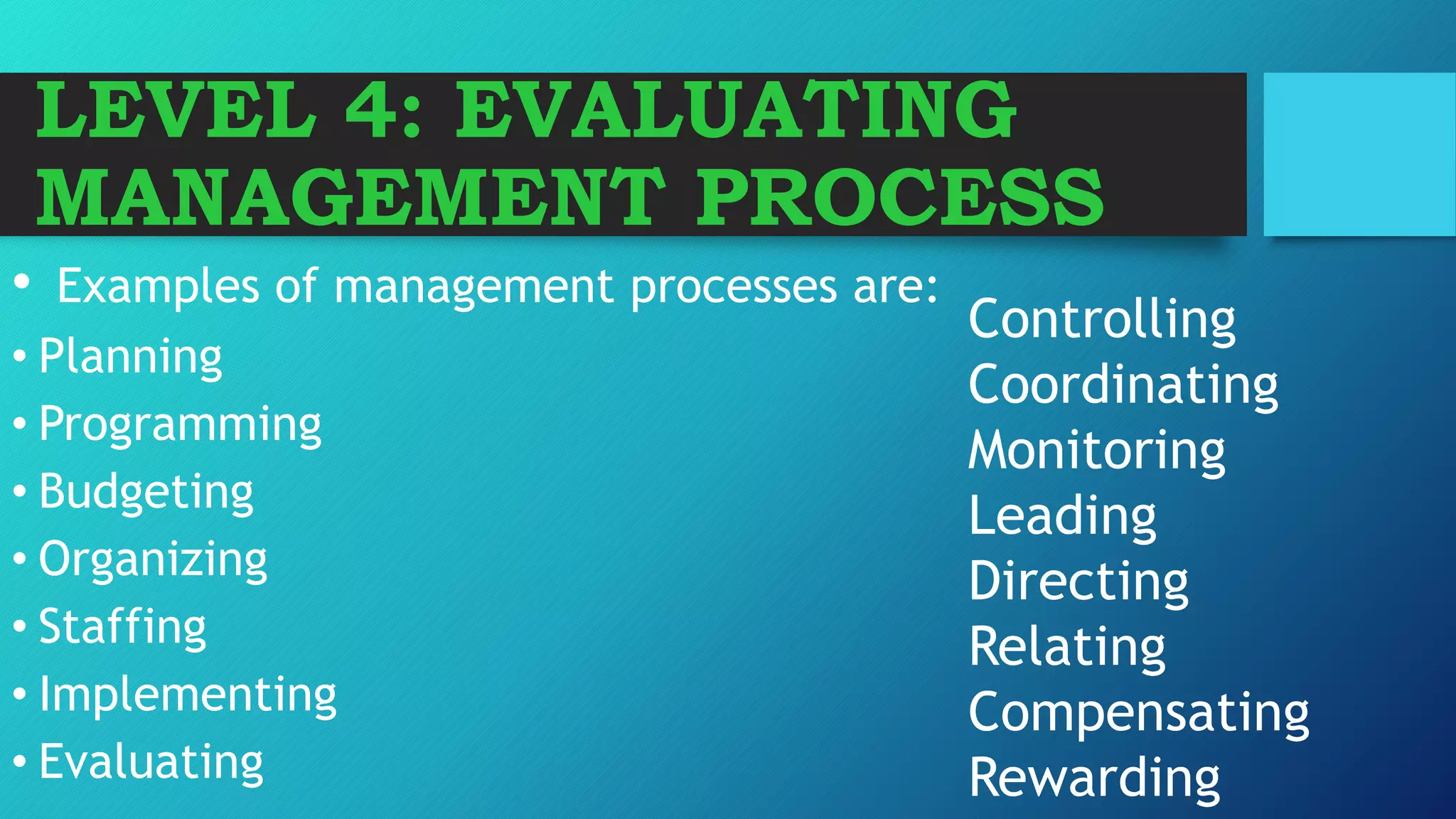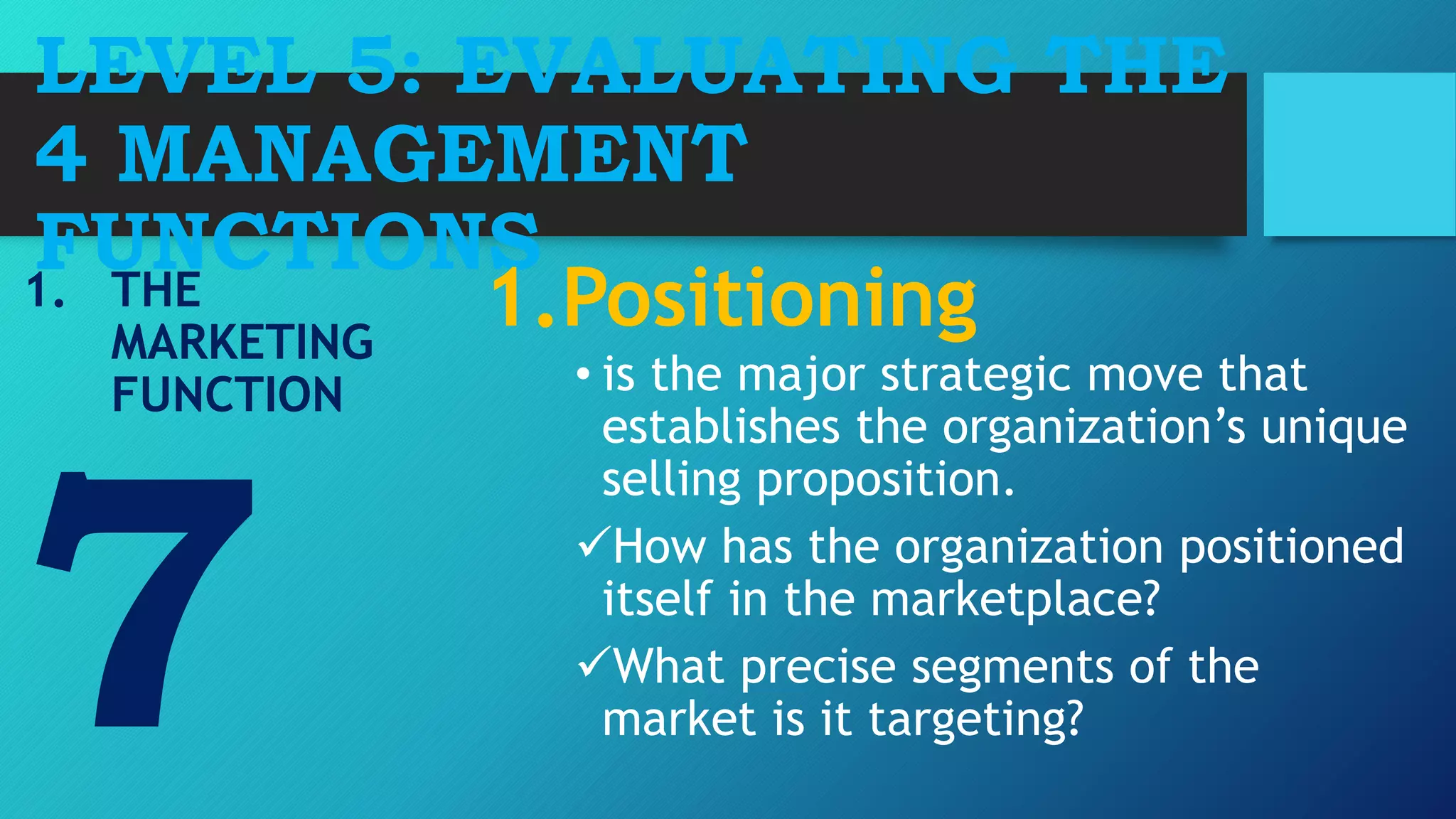This document outlines a 10-level framework for organizational diagnosis and assessment. It summarizes the first 3 levels:
1) Evaluating performance outputs and outcomes by analyzing products/services over time, against targets, and compared to benchmarks.
2) Evaluating organizational competencies and capabilities by assessing if strategies, tasks, and employee skills match organizational goals.
3) Evaluating utilization of resources by analyzing funding allocation and using measures like profitability, contribution margins, and returns to ensure efficient resource use.





